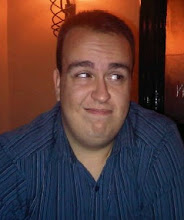British director David Yates has his hands full with the film adaptation of the last of the Harry Potter series. It’s now two years since the final book in the franchise, Harry Potter and the Deathly Hallows, was published, and the enormity of the task facing Yates is growing.
Although the trio of young actors that are central to the story, Daniel Radcliffe, Emma Watson and Rupert Grint, have grown into their roles beautifully, each book in the series crams in more plot than the previous. Early on in the planning stages for Deathly Hallows the decision was taken to split the film, but nowhere in the book is there an obvious opportunity to cut it down the middle.
Much of the opening half is spent with Harry, Ron and Hermione on the run from Lord Voldemort and his Death Eaters. Where to, we don’t know. In the book J.K. Rowling’s skill fills the pages with a sense of climbing tension, something Yates will be under pressure to replicate.
The deliberate dullness of this part of the book also poses a tough choice for Yates. If he cuts down on part of that time, the challenge faced by Harry will seem lesser, the helplessness Rowling conveys would disappear, and the film would be in danger telling a story that was too straightforward. In short, it would be another Da Vinci Code, a series of problem-solving missions around a linear plot sequence, and no thrills whatsoever.
Of course, whatever Yates does with the pair of films, they promise to be massive smashes and make distributers Warners a huge pot of cash. The Potter phenomenon has gone supernova, with eleven million copies of Deathly Hallows sold within 24 hours of it going on sale. Indeed, the sheer vastness of the series was probably at least partially behind any decision to make two films rather than one. Two films equals two gigantic piles of cinema receipts.
But it’s more than that. Deathly Hallows has the potential to be a great film. But Yates has many difficult choices to make. The sheer number of deaths in the film will make it hard to be family friendly, and the bloody battle at Hogwarts that is pre-curser to the final showdown between Harry and Voldemort could rival Peter Jackson’s version of Helm’s Deep in the second Lord of the Rings film, if it were to be approached in a similar manner.
But the need to keep the film as a 12A rating is likely to keep bloodshed to a minimum and many of the book’s deaths will probably be brushed over as a result. Even Rowling herself struggled with this, killing off two main characters in the latter stages of the story, Remus Lupin and Nymphadora Tonks, with little fanfare, despite their deaths orphaning a baby boy.
Yates will also need to decide whether or not to include the final scene of the book, Rowling’s epilogue, which ties up any questions about the futures of Harry, Ron and Hermione and some of their schoolfriends, albeit in a rose-tinted, slightly half-baked manner.
No doubt the makeup department could work their magic and make Radcliffe, Watson and Grint look old enough to play parents, and the prospect of a possible follow-up series focussing on one of Harry or Ron’s children’s adventures at Hogwarts would be tempting.
But with the release of the sixth film, Harry Potter and the Half-Blood Prince, coming soon, and rumours already persisting that the film concentrates too much on romantic sub-plots, Yates is sure to be keeping his ear to the ground for any tips.
[This was a wholly original article for my University final project Buzz, which I'm sure will turn up on this here site eventually]




No comments:
Post a Comment
Have a thought? Share it.